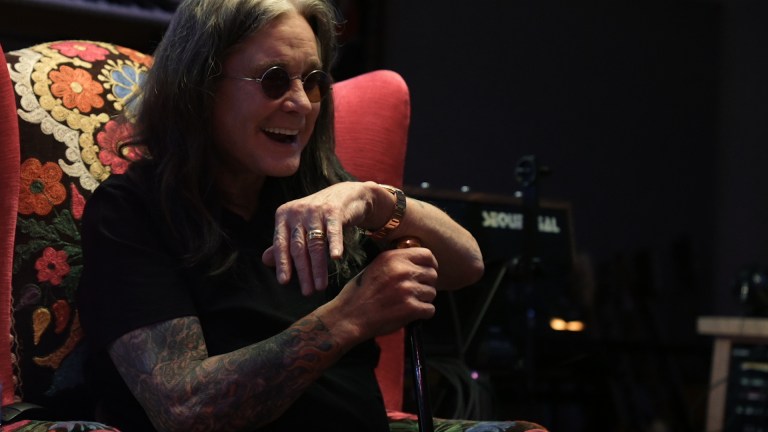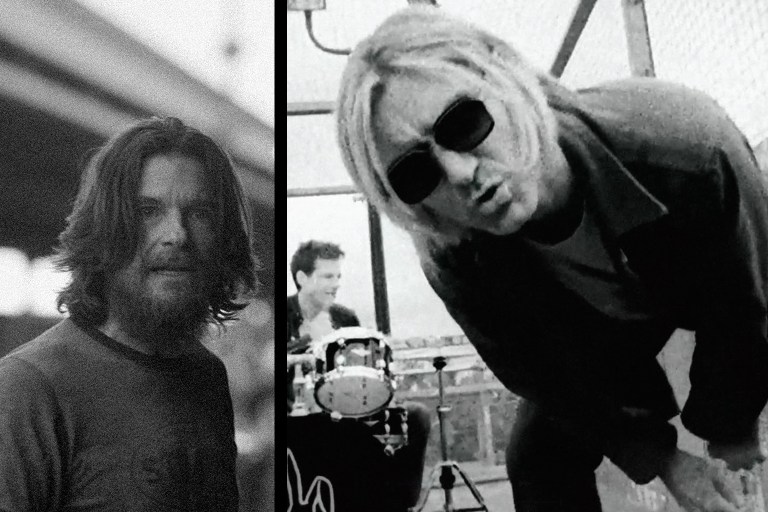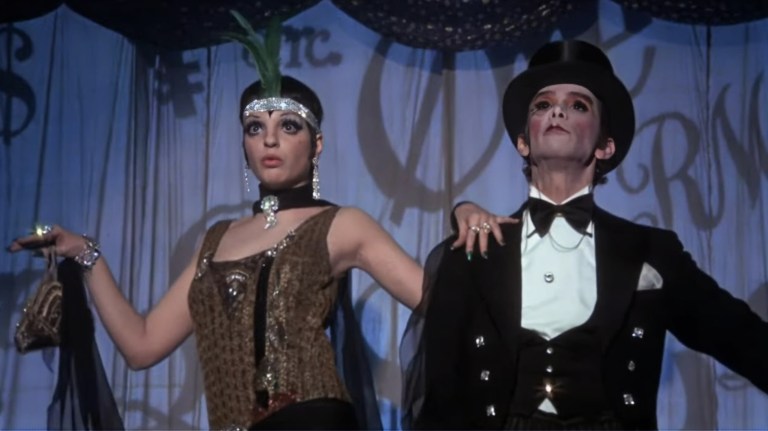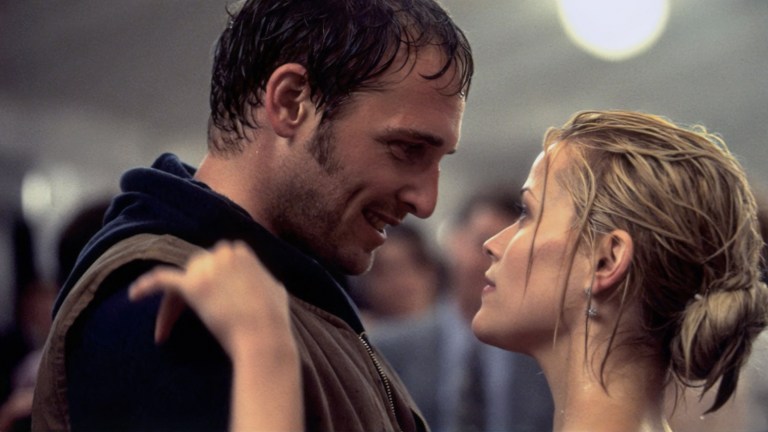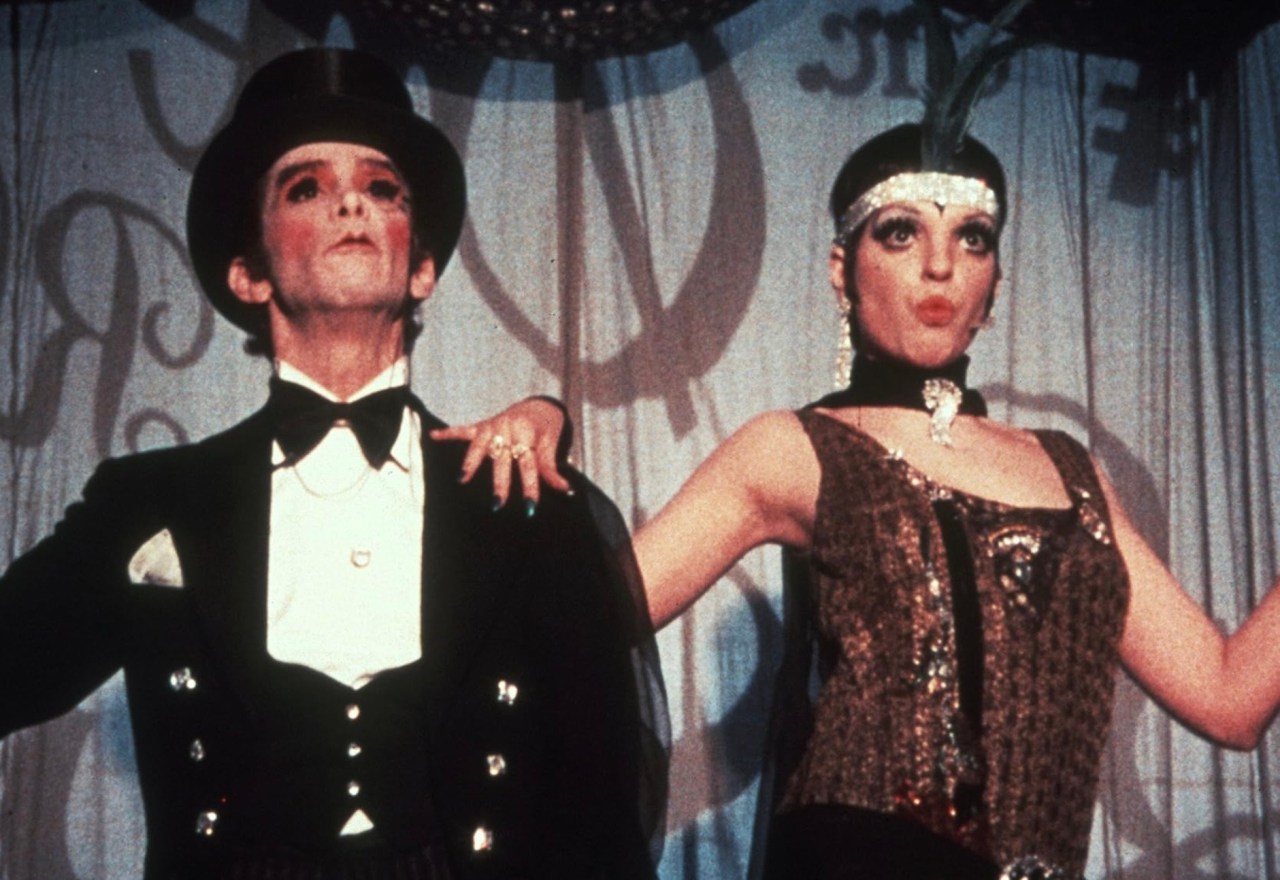
Ranking the Top 5 Songs From ‘Cabaret’ for the Movie Musical’s Anniversary
By ![]() Josh Lezmi
Josh Lezmi
The 1972 movie musical Cabaret, which earned multi-hyphenate Liza Minnelli her one and only Oscar, remains one of the most celebrated movie musicals of the 20th century. Minnelli’s vivacious take on Sally Bowles exhibits the character’s uninhibited nature — whether nailing Bob Fosse’s fluid and angular movements at the Kit Kat Klub or confidently strutting through the streets of a tumultuous Berlin, her character’s charisma shines through each gesture and step. Minnelli also seamlessly transitions to the more vulnerable moments as well, capturing the character’s aspirations and grave insecurities. Yet, it isn’t only Minnelli who made this Kander and Ebb musical a masterpiece.
The film exposes pre-World War II Germany, capturing the societal upheaval and political extremism that characterized the time. Cabaret notably juxtaposes the decadence of the Berlin nightlife against the looming threat of fascism. While the Kit Kat Klub represents sexual freedom and challenges traditional norms, outside its doors, a conservative Nazi regime is gaining traction. Yet, most importantly, it delivers on all these themes with glorious music and lyrics — featuring biting wit, subversive irony, and character-defining lyrics. Though the musical is filled with top-tier songs, let’s rank the top 5 to celebrate the film’s 52nd anniversary on February 13, 2024
5. “Money, Money”
“Money, Money” is a catchy little duet featuring Minnelli’s Sally Bowles and Joel Grey’s Emcee. The song features tongue-in-cheek lyrics that capture the allure of wealth against society’s shallow values. The duo performs the number with theatrical flair and over-the-top gestures, which complement its upbeat tempo and repetitive melody.
The song also prominently features brass instruments to give it a bold and brash sound. While the music is celebratory and fun, the lyrics are more cynical, honing in on the corrosive nature wealth (and wealth indifferences) bear on relationships. The wealthy can afford a “gay escapade,” while the poor hear “hunger” tapping at the door in the cold and unreliquishing winter. While the number is a fun little earworm that works to capture societal decay, it lacks the emotional depth and musical variation heard in some of the musical’s more showstopping songs.
4. “Willkommen”
“Willkommen,” the opening number to the musical, sets the stage for both the Kit Kat Klub’s subversive nature and the movie’s overall focus on the decadence that defined 1930s Berlin. The song is a quintessential cabaret splendor, blending elements of jazz, vaudeville, and musical theater. It boasts an alluring, come-hither-type quality Joel Grey achieves with a seductive charm that feels at once ironic and sincere. His exaggerated facial expressions and dynamic movements across the stage create a sense of flamboyance and disinhibition. He engages with the audience — shifting seamlessly from singing to talking — drawing in viewers at home as seamlessly as he draws in those occupying seats at the club. It cements Grey’s status as a stage and screen legend and also works to cement the film’s identity right out of the gate.
3. “Mein Herr”
The choreography alone deserves a prize. Characterized by Fosse-typical angular poses, precise footwork, and isolations, the performance is a treat for the eyes — a magnetic sequence that captures exuberance and unapologetic sensuality.
Minnelli and the dancers work in harmony, creating defined shapes that blend into visually striking tableaus. And of course, who could forget the chairs? The dancers incorporate props into the routine, using them as extensions of their bodies and tools to enhance their flirtation (and create a sense of embodying more space). With an iconic dance routine alongside Minnelli’s rich, velvety voice, the song captures Bowles’ longing, desire, and defiance. Shifting from whispery seduction to full-throated dominance, Minnelli conveys Bowles’ vulnerability and strength in equal measure. It’s just as playful as it is defiant, so her strength does not contradict the Cabaret-style sensuality but rather communicates a fierce and self-prescribed femininity. It’s one of the best on all fronts — lyrically, musically (via jazzy instrumentation and syncopated percussions), and choreographically.
2. “Maybe This Time”
Just tear our hearts out and stomp on them, why dontcha? “Maybe This Time” is the musical’s most emotionally charged and poignant number. It conveys Bowle’s longing and resilience against a whispering cynicism that begs to overpower her optimistic cover. Gazing to the horizon, Bowles imagines the life of love she can have… “maybe this time.” The lyrics will resonate with anyone who has been broken and beaten down by love and life. With all the power she can summon, Minnelli belts this ballad. She dreams of a life where she, at last wins, and we feel all her past pain, all her prior disappointments, and hope for her happiness in tandem. With a simple, evocative melody and a sole piano as accompaniment, the number allows the lyrics and the actor’s delivery to shine. It’s a moment of quiet reflection amidst chaos and is the musical’s most introspective song. The song builds to a powerful crescendo that mirrors Sally’s journey of self-discovery, culminating in a cathartic release of determination.
1. “Cabaret”
First: It’s important to note that “Maybe This Time” and “Cabaret” feel interchangeable in value, and both could realistically hold the number one slot. However, “Cabaret” is arguably the musical’s most iconic song and also serves to embody the entire masterpiece a bit more fully than “Maybe This Time.”
The song features the prototypical Cabaret sound — characterized by swing and jazz influences with salient piano and brass instrumentation. With its infectious refrain and catchy hook, each verse builds momentum to a climactic chorus in an instantly recognizable fashion.
The song’s juxtaposition of light-hearted exuberance with underlying melancholy creates a sense of tension and ambiguity. The song paints a hedonistic and carefree atmosphere at the opening, yet ultimately gets at the illusion of freedom and the darker undercurrents that lurk beyond the decadence…think about Elsie. What’s it all for? What’s the answer? How are we supposed to live? Oh well, come to the Cabaret and forget about it…for now.
